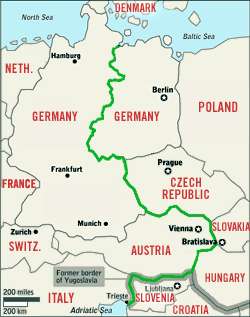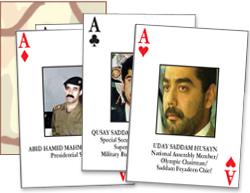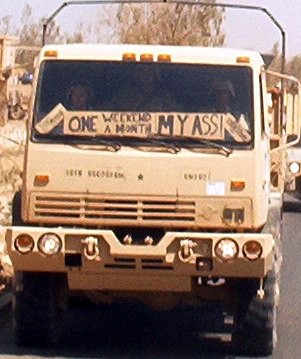war
No Man’s Land, International Park
From the Chicago Tribune, July 26, 2003:
Greening of the Iron Curtain
Gorbachev backs proposal to make border a preserve
“Mikhail Gorbachev, who as Soviet leader presided over the troops and tanks that guarded the Iron Curtain, now wants a nature reserve along the full length of the former Cold War border, from Finland to the Adriatic.
German and other European environmental groups have devised a plan to create nature parks out of the no man’s land that separated the Soviet bloc from the West.
 Kept forcibly free of people during more than 40 years of the Cold War, the border between Eastern and Western Europe became a refuge for plants and animals. Construction in the region now threatens these unintentional but important nature reserves, environmentalists fear.
Kept forcibly free of people during more than 40 years of the Cold War, the border between Eastern and Western Europe became a refuge for plants and animals. Construction in the region now threatens these unintentional but important nature reserves, environmentalists fear.
‘Ecology isn’t something we can only leave to politicians,’ Gorbachev, who is president of the environmental organization Green Cross International, said when lending his support to the project at a recent conference in Bonn, Germany.
Although the idea of making parks along former Cold War borders has been around since the fall of the Berlin Wall in 1989, the conference was the first time that representatives of all the border countries had met to discuss the feasibility of having parkland run the length of what was the Iron Curtain.
Plans for the park are furthest along in Germany, where the border between East and West Germany once stretched for 870 miles. A recent study found that 85 percent of the land is still undeveloped enough to be included in a national park.
Plans were delayed while courts determined the status of the land, but most claims are now settled, and the German Finance Ministry recently announced it might be able to donate the 65 percent of former border land still in government possession.
Environmentalists emphasize that the reserve would not simply be the area it covered or the number of endangered species it contained but also that it would link many groups of organisms, known as biotopes, in the longest continuous stretch of undeveloped land left in Central Europe.
In the other former border countries, plans for a park are in only their early phases. The most likely route would be around the eastern half of Austria to the Adriatic, while another area would encompass Albania, whose border with Yugoslavia was always heavily guarded, and would then pass along the northern border of Greece.
Several speakers at the conference observed that Gorbachev — who could have rolled back Eastern Europe’s anti-Communist revolutions by force as his predecessors did — was on hand and had, in effect, made the border park possible.
Steffen Flath, the environment minister of what is now the German state of Saxony, once part of Communist East Germany, turned to Mr. Gorbachev and said, ‘I remember July 1989 when things were starting to bubble, and our government said, “Send us tanks,” and you, Mr. Gorbachev, you didn’t send those tanks.’
With the congratulatory words about vanishing borders in central Europe, however, some of those who follow events in this part of the world feared that events farther east were being ignored. Tamas Marghescu, European director of the World Conservation Union, said nervous states about to join the European Union were creating new divides. He cited what he said was a new impenetrable fence along the border between Poland and Belarus, which he said split an important park that straddles the border. ‘It’s the new Iron Curtain,’ he said.”
The Thayatal National Park, in Austria, and the Podyji National Park in the Czech Republic already exist along the river known in Austria as the Thaya, and in Czech as the Dyje, a former boundary of the Iron Curtain. [more]
via Planetizen
Eradicating Guinea Worm Disease
In 1986, Guinea Worm Disease infected an estimated 3.5 million people living in rural agricultural communities in 16 African countries, parts of India, Pakistan, and Yemen. The disease is extremely painful and debilitating, contracted by drinking water containing larvae of the parasite Dracunculus medinensis. The disease has plagued humanity for thousands of years. Today, after a decade’s campaign of education and the design and distribution of a special fabric, the disease has been virtually eliminated.
 “Dracunculus medinensis has been traced to calcified worms in the stomachs of Egyptian mummies during the first millenium. Records of infection and treatment have been found dating back to 1530 BC. The Guinea worm is believed to be the ‘fiery serpent’ mentioned in the Bible, that infected the Hebrews during their exodus from Egypt. The medical symbol ‘Caduceus’ is believed to represent two coiled Guinea worms.” [source]
“Dracunculus medinensis has been traced to calcified worms in the stomachs of Egyptian mummies during the first millenium. Records of infection and treatment have been found dating back to 1530 BC. The Guinea worm is believed to be the ‘fiery serpent’ mentioned in the Bible, that infected the Hebrews during their exodus from Egypt. The medical symbol ‘Caduceus’ is believed to represent two coiled Guinea worms.” [source]
A Sanskrit poem from the 14th century B.C. includes the plea, “Let not the sinuous worm strike me nor wound my foot.” [source]
“Victims must endure the worm’s painful emergence for as long as three months, and are usually incapacitated not only by the pain but by fever, fatigue, and nausea as well. To speed things along, people carefully wind the worm around a stick as it emerges [as depcted in the ‘Caduceus’], being careful not to pull too hard. If the worm breaks, it will retract into the body, causing severe inflammation. Over half of all worm-emergence sites become infected, and the worst cases can result in permanent crippling or even death from tetanus.” [source]
There is no preventive or curative drug. However, the disease is relatively easy to prevent — drinking contaminated water is the only way to acquire the disease.
“Measures to prevent [Guinea Worm Disease] are community-based and inexpensive. Control methods include health education, providing safe drinking water, using filters to remove infected copepods from drinking water, boiling water or treating it with small doses of temephos, a colorless, odorless chemical that, kills copepods but is harmless to people.” [source]
 “The cycle of transmission can easily be broken by filtering drinking water and preventing infected people from entering drinking water sources. [The worm] has no reservoir other than humans. When the worm’s one-year life cycle is broken for two years, the disease is permanently eliminated from the area. This is the only disease that can be eradicated by providing clean drinking water....
“The cycle of transmission can easily be broken by filtering drinking water and preventing infected people from entering drinking water sources. [The worm] has no reservoir other than humans. When the worm’s one-year life cycle is broken for two years, the disease is permanently eliminated from the area. This is the only disease that can be eradicated by providing clean drinking water....
Water contaminated with guinea worm is safe for drinking (as far as this disease is concerned) if the water is filtered through a tightly woven cloth.
Inexpensive, effective cloth is available in most local African markets, and 1 million square meters of special synthetic fabric, for more rapid water filtration, has been donated by DuPont, with additional synthetic cloth donated by the Danish government and others.
Agricultural and school projects, along with company advertising, can teach people about guinea worm and how to protect themselves. Farmers who drink from ponds during the day should have a filter with them.” [source]
The filter must always be used with the same side up, usually marked with a printed symbol or instructions.
Since 1986, local, national, and international campaigns have had dramatic success. The disease has been virtually eliminated.
“The Carter Center joined the fight against Guinea worm in 1986, when it helped Ghana and Pakistan launch their eradication programs. Since then, it has spearheaded the World Health Organization’s global eradication effort, aimed at making Guinea worm only the second disease, after smallpox, to be wiped out completely. Under the leadership of the Carters and Dr. Donald Hopkins, the Carter Center has raised money, provided technical expertise, forged partnerships, and mustered the political will necessary to achieve this ambitious goal. They have distributed portable filters and initiated education programs to help break the cycle of the worm.
Transmission has been stopped in seven countries, and Asia is now free of the disease. In 2001, fewer than 65,000 cases remained in thirteen African countries, a 98 percent reduction since the beginning of the effort. Experts are confident that total eradication is just around the corner.
In 2001, it was estimated that 80 percent of the remaining cases were in the Sudan, where civil war has prevented a major eradication effort. That same year, courageous Carter Center volunteers distributed 8.5 million pipe filters, enough for every man, woman and child in the endemic areas of the Sudan. These hard plastic straws with nylon filters at one end can be carried around the neck and allow nomadic peoples to strain their water before drinking.” [source]
At the request of President Carter in 1990, DuPont developed a nylon monofilament filtration fabric to filter water infested with the Guinea worm parasite. The fabric is manufactured by Precision Fabrics:
“This fabric was unique. It had never been produced in this country. It is woven using a very fine monofilament nylon yarn. The fabric is washed, stabilized and finished to control the pore size of the fabric. It is precision slit into 12-inch wide rolls for export to the countries plagued by the disease. The fabric is then used in villages to filter water sources.”
DuPont and Precision Fabrics donated millions of square yards of the fabric from 1990 to 1997. Other countries have also produced similar fabric filters.
...
The Guinea Worm Filter is my suggestion to “100 ‘Cubes of Good Ideas’”, an exhibition of “objects that change people’s lives.” Design for the World is organizing the exhibition, which takes place during the Universal Forum of Cultures in Barcelona in the summer of 2004.
One Weekend a Month My Ass!
A U.S. reservist in Iraq emails a photo to a friend back home. Friend posts it on his blog. The image is widely circulated by email, and ultimately finds mention in The New York Times a month later.
The war drags on. Tours of duty are extended. U.S. soldiers continue to kill and be killed. Dissent among the military and military families smoulders.
And the scholarship funding? Job skills? Veteran’s benefits? One weekend a month?
See these articles about the myths and messages in military graphics and advertising sold by recruiters to high school and college students across the United States of America.
A Game of Hearts
 On April 11, 2003 the U.S. military released their list of most-wanted senior Iraqi government in the form of a deck of playing cards.
On April 11, 2003 the U.S. military released their list of most-wanted senior Iraqi government in the form of a deck of playing cards.
The cards were designed by staff of the Defense Intelligence Agency and the 3401st and 3418th Military Intelligence Detachments. One of the designers, Sergeant Scott Boehmler, 27, an Army reservist from Hazleton, Pennsylvania reports, “We understood what guys like to do on their downtime. This is an effective way of getting these images in the soldiers’ minds.”
Images can be downloaded from the Department of Defense Web site in HTML or PDF.
Production of the cards was widely covered in the U.S. mainstream media and treated as a significant event in the war. Subsequent reports of the arrest of Iraqi officials frequently refer to the list, even noting when an arrested official is not on the list. The reports are occasionally illustrated with an image of said official’s playing card.
The decks have also become enormously popular with the public. Web sites have sold hundreds of thousands of decks. As of May, one company reported $1.5 million in sales. It’s one thing to sell a war to the public. It’s whole other matter for them to buy it themselves in droves. I’ve even seen street vendors in NYC selling the decks alongside the knockoff sun glasses and watches and received a couple of unsolicited email messages offering the decks for sale.
U.S. military personnel are the world’s largest consumers of playing cards, according to Cincinnati-based United States Playing Card Company, the world’s largest playing card manufacturer. According to Time (May 12, 2003) the extreme popularity of the most-wanted cards prompted the distributor to reissue cards created for the military in earlier wars. During World War II “spotter decks” were produced for troops to distinguish between Allied and enemy aircraft. During the Vietnam War “decks containing only the ace of spades were passed out to U.S. troops, who would display a card on their helmets to scare away the Viet Cong — supposedly superstitious about the card, which fortune tellers considered a harbinger of suffering and death.”
The cards have inspired a genre of spinoffs.
GreatUSAflags.com has followed up with U.S. Military Heroes playing cards “honoring America’s servicemen and women involved in Operation Iraqi Freedom.” The deck also features images of aircraft, ships, submarines, aircraft carriers, vehicles and missiles deployed in battle.
On April 25, global justice group, the “Trade Regulation Organization,” released their U.S. Regime Change cards [image, PDF 6MB]. The group, “estimating that the U.S. governing regime is no longer consistent with world peace or prosperity, hopes that the playing cards will show the way to regime change and, eventually, large-scale war crimes proceedings.”
On May 1, Greenpeace International released a deck of “most wanted” cards depicting the nuclear powers of the world. [PDF, 96K] “This deck is designed to help delegates to the Non-proliferation Treaty meeting recognise owners of weapons of mass destruction. Packed with nuclear weapons of mass destruction facts. Fun for the whole family.” Says Tom Clements, senior campaigner with Greenpeace, “It ties the anti-war message together with the disarmament message.”
 On May 7, the conservative Web site NewsMax announced the Deck of Weasels [image] which features images of anti-war celebrities and politicians includes Michael Moore, Tim Robbins, Jacques Chirac, Barbara Streisand, Teddy Kennedy, Kofi Annan, Vicente Fox, Jean Chretien,
On May 7, the conservative Web site NewsMax announced the Deck of Weasels [image] which features images of anti-war celebrities and politicians includes Michael Moore, Tim Robbins, Jacques Chirac, Barbara Streisand, Teddy Kennedy, Kofi Annan, Vicente Fox, Jean Chretien,  Senator Ted Kennedy and Robert Byrd. Each card features a quote by the celeb opposing the U.S. invasion of Iraq. Each of the photographs has been altered so each figure wears the beret of Saddam Hussein’s Republican Guard.
Senator Ted Kennedy and Robert Byrd. Each card features a quote by the celeb opposing the U.S. invasion of Iraq. Each of the photographs has been altered so each figure wears the beret of Saddam Hussein’s Republican Guard.
On May 15, the Ruckus Society released America’s War Profiteers, a deck of cards identifying 53 individuals and institutions in the oil, military, government, media, and policy sectors. “The groups’ aim is to expose, ‘The links among corporations, institutions, and government officials that profit from endless war.’” The site also features a good set of links to articles and campaign pages.
On May 23, Nitestar Productions released “The Deck of Republican Chickenhawks,” depicting the 54 Republican officials, congressmen, politicians and pundits who avoided serving their country through connections, deferments, or other excuses.” Needless to say, many of the officials vigorously supported the U.S. war on Iraq. The deck was inspired by a list maintained by the New Hampshire Gazette of Republican politicians and pundits who have never served in armed combat.
Still other decks reported in the May 18 Washington Post:
“Republicans in the Texas legislature had cards made depicting the state’s ‘most-wanted Democrats’ — the lawmakers who fled to Oklahoma to scuttle a vote on a bitterly contested Republican redistricting plan....
Inspired by the Pentagon’s cards, Frances Gomez, 23, decided to print up card sets featuring her top 55 Cuban villains. But just before the printing order was sent out, Gomez tweaked her plan in hopes of really sticking it to Fidel Castro. She decided to make the cards look like dominoes, the real king of the board games in Little Havana and just about anywhere else that Cubans gather.
So, instead of being the ace of spades — the card reserved for Saddam Hussein in the Pentagon’s deck — Fidel is the Double Nine, the domino tile that no player wants to hold at the end of a game. Gomez needed help from Cuban American groups in Miami to compile her list. She was born in the United States and says, like many Cuban Americans her age, that she knew little about the details behind the deep animosity felt toward Castro and his allies by older generations that fled the island nation.
‘It’s important to learn who these people are,’ Gomez said.”
In addition to the playing cards are recent political trading cards.
 In 1991, trading card publisher Topps (coordinating with the Pentagon and Navy Department) published 3 sets of Desert Storm Trading Cards. In 2001, they published a series of Operation Enduring Freedom Trading Cards.
In 1991, trading card publisher Topps (coordinating with the Pentagon and Navy Department) published 3 sets of Desert Storm Trading Cards. In 2001, they published a series of Operation Enduring Freedom Trading Cards.
An article in the Guardian notes:
“90 glossy cards featuring US political and military leaders, the patriotic response to the September 11 attacks, and military hardware.... The series also features a photograph of flowers laid outside the US embassy in Pakistan in the aftermath of the September 11 atrocities. No corresponding card shows the subsequent angry demonstrations against the US bombing campaign.... Topps would not directly respond to charges that the cards promoted an unquestioning view of the war to children.”
Kingsley Barham, publisher of marijuana trading cards that cover hemp history, politics, types, and uses, developed a set of trading cards about the September 11 attacks, Heroes of the World Trade Center. Despite approval from families of victims whose portraits are on the cards, the cards were met with outrage by politicians and the media. The New York City mayor Michael Bloomberg urged lawyers to find ways to prevent the sale of the cards.
 Satire decks of the U.S. “war on terrorism” include American Crusade 2001+, Unofficial Iraqi Freedom Action Cards, and the images of Playing the Hitler Card, a small collection of cards with images of dictators and links to pages were they have recently been compared to Hitler.
Satire decks of the U.S. “war on terrorism” include American Crusade 2001+, Unofficial Iraqi Freedom Action Cards, and the images of Playing the Hitler Card, a small collection of cards with images of dictators and links to pages were they have recently been compared to Hitler.
In September, 2002 Slate published the Flash animation Corporate Scandal Trading Cards, “the fastest guide to America’s top 10 business crackups” with names and photos of CEO’s along with some statistics and a brief description of the crimes and frauds of WorldCom, Enron, Global Crossing, Adelphia, Tyco, ImClone, Halliburton, Harken, Qwest, and Andersen Consulting.
In April 2000, Texans for Public Justice produced a set of Bush League trading cards. The 20 cards feature statistics and a profile of a Bush “Pioneer” who has raised at least $100,000 for Bush’s presidential election. The profiles are drawn from TPJ’s investigation into the 212 announced Bush “Pioneers.”
 On the heels of their 1989 comic book “Brought to Light: Thirty Years of Drug Smuggling, Arms Deals, & Covert Action,” in 1990 Eclipse published the original Friendly Dictator Trading Cards. The hallucinogenic artwork of Bill Sienkiewicz illustrates “three dozen of America’s most embarrassing ‘friends’, a cunning crew of tyrants and corrupt puppet-presidents who have been rewarded handsomely for their loyalty to U.S. interests.” Other political trading card sets published by Eclipse include “Drug Wars,” “The Iran Contra Scandal,” and “Rotten to the Core - New York Political Scandal,” and “Coup D’etat,” which presents theories pertaining to the assassination of President John F. Kennedy.
On the heels of their 1989 comic book “Brought to Light: Thirty Years of Drug Smuggling, Arms Deals, & Covert Action,” in 1990 Eclipse published the original Friendly Dictator Trading Cards. The hallucinogenic artwork of Bill Sienkiewicz illustrates “three dozen of America’s most embarrassing ‘friends’, a cunning crew of tyrants and corrupt puppet-presidents who have been rewarded handsomely for their loyalty to U.S. interests.” Other political trading card sets published by Eclipse include “Drug Wars,” “The Iran Contra Scandal,” and “Rotten to the Core - New York Political Scandal,” and “Coup D’etat,” which presents theories pertaining to the assassination of President John F. Kennedy.
Douglas Rushkoff’s 1994 book Media Virus quotes journalist and Eclipse editor Catherine Yronwode:
“Our trading cards are designed so they read like Hypercard stacks. Each cross-references to other cards... They all connect, and you can rearrange them in chains of interconnectivity. Or chronologically. You can find out who someone’s boss was, how different people moved around, that this guy was in Vietnam at the same time as this guy, and then that they were both in Nicaragua at the same time, too.”
Eclipse’s “Crime and Punishment” and “True Crime” cards, which present information about serial killers and gangsters, prompted the Board of Supervisors of Nassau County to pass Local Law 11-1992 which made it illegal to disseminate “indecent crime material to minors.” From the Friendly Dictators site:
“In 1997... a U.S. federal appeals court struck down a Nassau County, New York law banning the sale of trading cards depicting ‘any heinous crime". The court found for Eclipse who had challenged the law on First Amendment grounds - cf: Eclipse Enterprises, Inc. v. Gulotta (U.S. Federal Court of Appeal, 2nd Circuit, December 1997). The expense of this court case seems to have bankrupted them - at any rate, for whatever reason, Eclipse appears to have folded. There are no web entries for the company, no listing in any of the Publishing Indexes I’ve been able to find, and all its products are out of print, as far as the big web booksellers are concerned.”
Details of the case and proceedings can be found here.
Techniques of Electronic Advocacy
This entry has been updated and incorporated into An Introduction to Activism on the Internet.
I’ve been searching for a list of excellent examples of Internet activism. I couldn’t find one, so I made my own.
I’ve structured much of this list around categories outlined by Sasha Costanza-Chock in “Mapping the Repertoire of Electronic Contention,” in Representing Resistance: Media, Civil Disobedience and the Global Justice Movement, eds. Andrew Opel and Donnalyn Pompper. Greenwood, in press. Unless otherwise indicated, the quoted text below has been taken from him.
Though I’ve added some of my own commentary, this is not intended to be a full analysis of the campaigns and organizations mentioned. I disagree with the politics of many of the examples listed, but think there is something to be learned from each of the them.
Operation Wake The Fuck Up
From Boston IndyMedia:
 “On the evening of May 20, Direct Action anti-authoritarian activists from the White Mountain Autonoma, AnarchoNinjas, and the Trained Monkee Collective came together to ‘tag’ every pay phone in Nashua, NH with a sticker that reads, ‘This Phone is Bugged’ in large letters, citing the relevant section (Section 215) of the Patriot Act 2001 authorizing this in smaller print. An example of the stickers may be viewed at http://www.crimethinc.com/cards/28_med.gif. The stickers are placed upon the telephone receivers.
“On the evening of May 20, Direct Action anti-authoritarian activists from the White Mountain Autonoma, AnarchoNinjas, and the Trained Monkee Collective came together to ‘tag’ every pay phone in Nashua, NH with a sticker that reads, ‘This Phone is Bugged’ in large letters, citing the relevant section (Section 215) of the Patriot Act 2001 authorizing this in smaller print. An example of the stickers may be viewed at http://www.crimethinc.com/cards/28_med.gif. The stickers are placed upon the telephone receivers.
Intended to create situations where the average mass media-deadened citizen of Nashua is confronted with the current political reality of life under Bush II and his attack dogs of Homeland Security, Nashua was chosen as the introductory site for ‘Operation Wake The Fuck Up’ due to its large population, strategic location on the NH-Massachusetts border (thousands of Bay Staters shop in Nashua daily to avoid Massachusetts sales tax), and the critical role it plays in the NH Presidential Primaries as the first large population block to report its’ poll returns.
There are approximately 400 pay phones in Nashua, locate in the various shopping malls, pubs, public buildings, stores, restaurants, and hotels - including the 8 pay phones in the lobby of the Sheraton Tara, preferred home-away-from-home for Bush II when in the greater Boston area, due to its isolation and ‘security’.
Additional activities are planned for the near future, including mock ‘stop-and-search’ actions, imitating the activities of Homeland Security and its componant bureaus and agencies. These will be very similar to the mock ‘search-and-destroy’ missions used to great effect by Vietnam Veterans Against The War during the anti-Vietnam War years, in which activists, dressed as ordinary people, are pulled out from the innocent spectators and are mock-abused in true government style.
Activists wishing to join the fun may contact the White Mountain Autonoma at [email protected].”
Bush launched his presidential campaign just last Friday. The New Hampshire primary takes place on January 27, 2004, a mere 35 weeks from now.
Print out the stickers yourself or buy a pack online.
Thanks, American Samizdat
Dell: Recycling with Prison Labor
“The Computer TakeBack Campaign is protecting America’s public health by promoting corporate accountability for electronic waste.
Tens of million of computers become obsolete every year and less than 10% are collected for recycling, with the rest of them stored in homes and offices, disposed in landfills and burned in incinerators, and shipped to poor countries for dismantling under horrific conditions. Newer, faster, smaller, and cheaper products hit the market every day - all of them toxic, most of them designed for disposal rather than reuse and recycling, and, once obsolete, are ignored by the very companies that profit from short life-spans and cheap design.
Currently, the expense of collecting and managing discarded electronics is borne by taxpayer-funded government programs. Public policy and corporate practice have failed to promote producer take back and clean design. The principle of producer take-back shifts the burden for collection and recycling costs off of taxpayers and government to the producers, providing an incentive for companies to market products that are durable, less-toxic, and recyclable....
The Computer TakeBack Campaign was formed to promote clean design and brand owner responsibility for discarded computers and electronics.”
The campaign was launched on November 27, 2001 with the release of the Silicon Valley Toxics Coalition’s 3rd Annual Computer Report Card. The annual report measures the environmental qualities of electronic equipment and the environmental performance of companies. The report noted that several major U.S. computer companies ran TakeBack programs in Europe, but not in the United States.
Dell was singled out as the focus for the first major campaign. Dell has the largest share of the U.S. and global personal computer market, and are the leading seller of computers to institutions. The Computer TakeBack Campaign is also targeting Dell “because the company’s sales and distribution model uniquely positions it to establish an effective national take back system for used and discarded products.”
After a long campaign and a much public pressure, on March 19, 2003, Dell announced it’s new curbside recycling program. As of March 25, consumers in the continental U.S. could “order home pickup of unwanted notebooks, desktops, monitors, and other select computer equipment for $15 per unit.”
Dell, however, is using prison labor to do the dirty work of recycling its electronics.
A friend of laughingmeme writes:
- Dell still contracting with prison labor to do recycling... prison labor is a low-road solution which relies on ‘high tech chain gangs’ and thwarts the development of a legitimate recycling infrastructure... and prison laborers are handling toxic computers and OSHA standards are not enforced as they should be
- Dell still charging a fee at the back-end (instead of implicit in purchase price) for the pick-up, which is a disincentive for participation
- Dell not reporting on goals or setting timeframes/goals for recovery
- Dell not aggressively advertising program (they launched the program the week we went to war!)
- Dell not commenting/committing to phasing out the toxins in their products
- Dell partnering with a charity, but what will eventually happens to the computers? — they way they are designed now they all become obsolete at some point
- [As of mid-March] Dell has recovered only 1,000 machines in the last six months which is really pathetic. (they actually started taking back computers from consumers in sept, but are just now expanding the program to include home pick-up)
According to this fact sheet: prison labor is not protected by federal safety and health standards, nor is it covered by National Labor Relations Board policies. Financial support for this U.S. prison-industrial complex steals tax dollars from public education and environmental protection programs and kills private sector development in electronic recycling.
Prisoners should be able to develop occupational and educational skills, not forced to do dangerous, toxic work because companies can get away with it. Investing in prison labor also reinforces incarceration as a solution social, political, and economic problems.
Find out more, and what you can do.
Update: On July 3, 2003, Dell announced that it will stop using a vendor that relies on prison labor for its electronics recycling.
Publish or Perish
“How an Atheist Helps Protect Islamists in Turkey,” The New York Times, November 26, 2002:
“In 1995, [Turkish publisher Sanar] Yurdatapan’s activism took the turn that came to define it: It began when Yasar Kemal, one of Turkey’s most famous writers, was charged under antiterrorism laws for writing an article against the war in Kurdish areas.
In protest, 1,080 well-known people signed their names [as co-publishers] in a book that republished Mr. Kemal’s article and nine other banned articles. They then demanded that they all be prosecuted because it was also a crime to reprint banned articles.
Mr. Yurdatapan’s orchestration of the book put the Turkish state in an awkward position, having to suspend sentences or change the laws to avoid arresting everyone. In 1999, however, he received a two-month sentence....
With little money and a tenuous legal status — his group, Initiative for Freedom of Expression, exists only on the law’s margins — Mr. Yurdatapan keeps up his work: 4 books and over 40 pamphlets have been published.
In 2000, he took up the case of Islamic activists, including the nation’s only Islamist prime minister, Necmettin Erbakan, who has been banned from political life since the army’s ouster of his government in 1997 and whose party was victorious in the recent elections.”
The February 3, 2000 Kurdish Observer reports that Sanar, a civilian, was sentenced by a military court to two months in prison for “making publication to lose people’s enthusiasm for the military service.”
Sanar became well-known as a composer, songwriter, and advocate for free expression in the 1970’s. From Human Rights Watch:
“Sanar Yurdatapan was stripped of his citizenship by the military junta that seized power in Turkey in 1980. He lived in exile from 1980 until 1992. The military handed back power to a civilian government in 1984, but they have kept public discussion of certain issues off limits, particularly criticism of state institutions (especially the military) and the role of ethnicity or religion in politics.”
He has also worked on prison conditions, the right to conscientious objection to military service, and exposed the Turkish military’s massacre of Kurds. The Times again:
“[In the summer of 2002], as part of its bid to join the European Union, Turkey passed several laws easing freedom of expression. Mr. Yurdatapan says the atmosphere is improving, though not enough for him to end his work.”
More publishing than design, the 1995 action is such an elegant act of civil disobedience, a grand mockery of Turkish censorship law.
Metropolis Observed
The June issue of Metropolis magazine has a short review of this blog in its Screen Space column:
Social Design Notes
Activist and graphic designer John Emerson’s Web log follows the role of design in social activism, collecting little-known news items from around the world. Recently Emerson has devoted much of his coverage to the war in Iraq. He critiques the way newspapers and magazines use graphics to enforce pro-war rhetoric and celebrates protestors who alter existing ads and signs to get their message out.
I’m flattered that Metropolis reviewed my blog, but the review is somewhat skewed by its timing. If you stopped by during the invasion of Iraq that was probably much of what I was blogging.
Crawl through the archives, though. There’s some good stuff there. I do write a lot about the role of design in social justice movements, but I also blog other examples of design in the public interest including (but not limited to) environmentally friendly materials, civic wayfinding, public friendly consumer labeling, sustainable energy sources and design for energy efficiency, universal design and accessibility, mapping, design and public transit, e-government, and design by working people for working people. In addition to news items, I do post some commentary, criticism, original research, and longer features (when I get the time.) I do hope to do more of the latter and less of the link propagation.
I’m not sure what “little-known” means. I do not post items because they are obscure, though I sometimes do not post things that are all over everyone else’s blogs. “Little-known” to who?
In my item on anti-war protests in the City, I was not just celebrating protestors altering ads, but commenting on how protestors were using the City itself not just as a site of protest but as a medium. Not just altering ads, but posting stickers and signs of their own, marching by the thousands, rearranging street furniture, blocking traffic with their bodies, changing the face of the City and using the City itself to disrupt business as usual. I’m actually increasingly skeptical of Adbusters style activism, of altering logos and ads unless it’s within the context of a broader grassroots social movement.
Anyway, all this is to say that in year two of this blog (which starts today) I will try to post more in-depth, to organize my archives better, and to further clarify this whole “design in the public interest” thing.
Thanks for stopping by.
Incarcerated America
“More than two million men and women are now behind bars in the United States. The country that holds itself out as the ‘land of freedom’ incarcerates a higher percentage of its people than any other country....
Perhaps the single greatest force behind the growth of the prison population has been the national ‘war on drugs.’ The number of incarcerated drug offenders has increased twelvefold since 1980. In 2000, 22 percent of those in federal and state prisons were convicted on drug charges.
Even more troubling than the absolute number of persons in jail or prison is the extent to which those men and women are African-American. Although blacks account for only 12 percent of the U.S. population, 44 percent of all prisoners in the United States are black.
 Census data for 2000, which included a count of the number and race of all individuals incarcerated in the United States, reveals the dramatic racial disproportion of the incarcerated population in each state: the proportion of blacks in prison populations exceeds the proportion among state residents in every single state. In twenty states, the percent of blacks incarcerated is at least five times greater than their share of resident population.”
Census data for 2000, which included a count of the number and race of all individuals incarcerated in the United States, reveals the dramatic racial disproportion of the incarcerated population in each state: the proportion of blacks in prison populations exceeds the proportion among state residents in every single state. In twenty states, the percent of blacks incarcerated is at least five times greater than their share of resident population.”
Some experiments with GIS turned into a redesign of this Human Rights Watch backgrounder. Interesting to note the regional clusters that emerged from dumping various metrics into a spatial layout. Download the PDF here (192 Kb).


